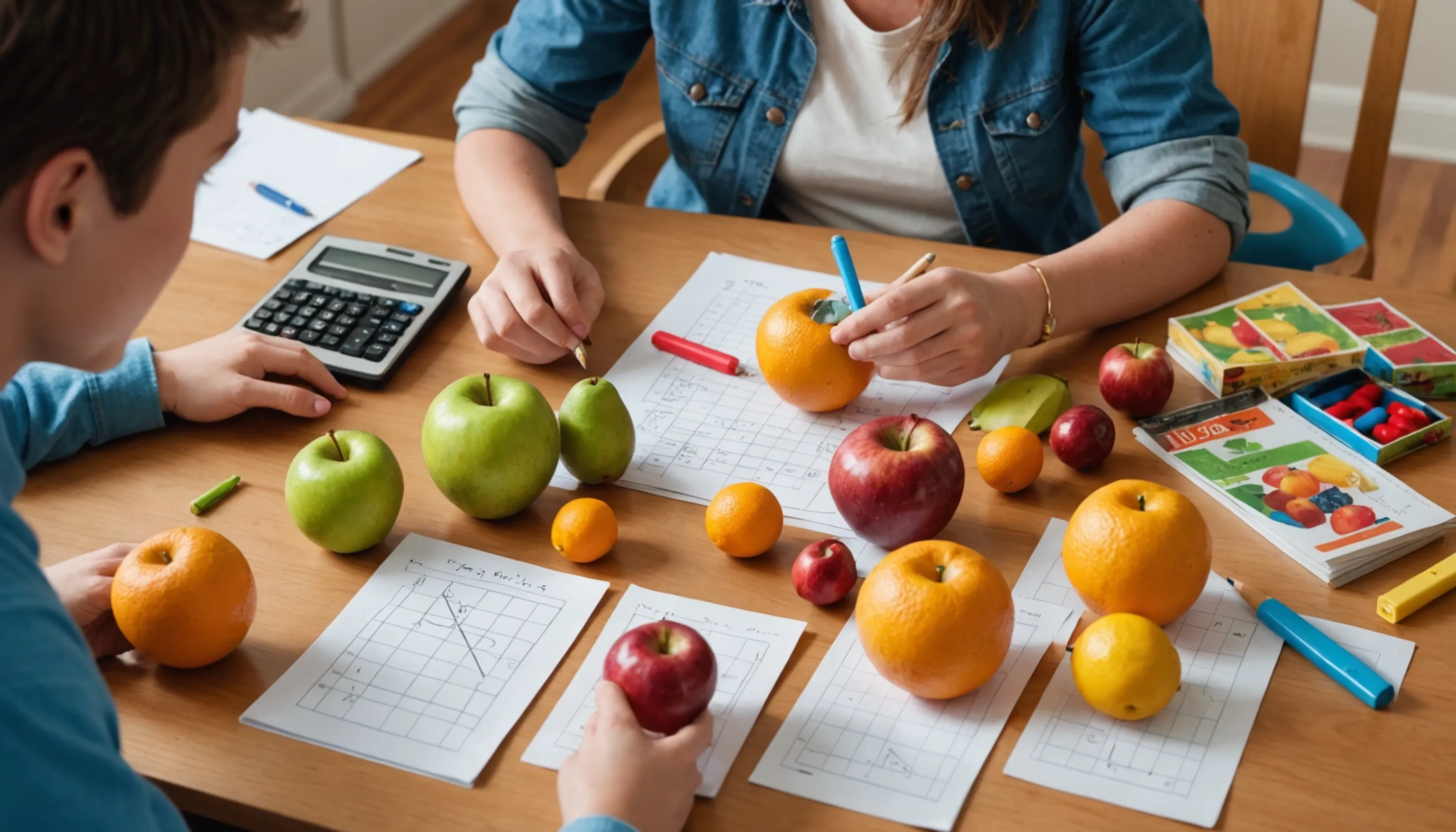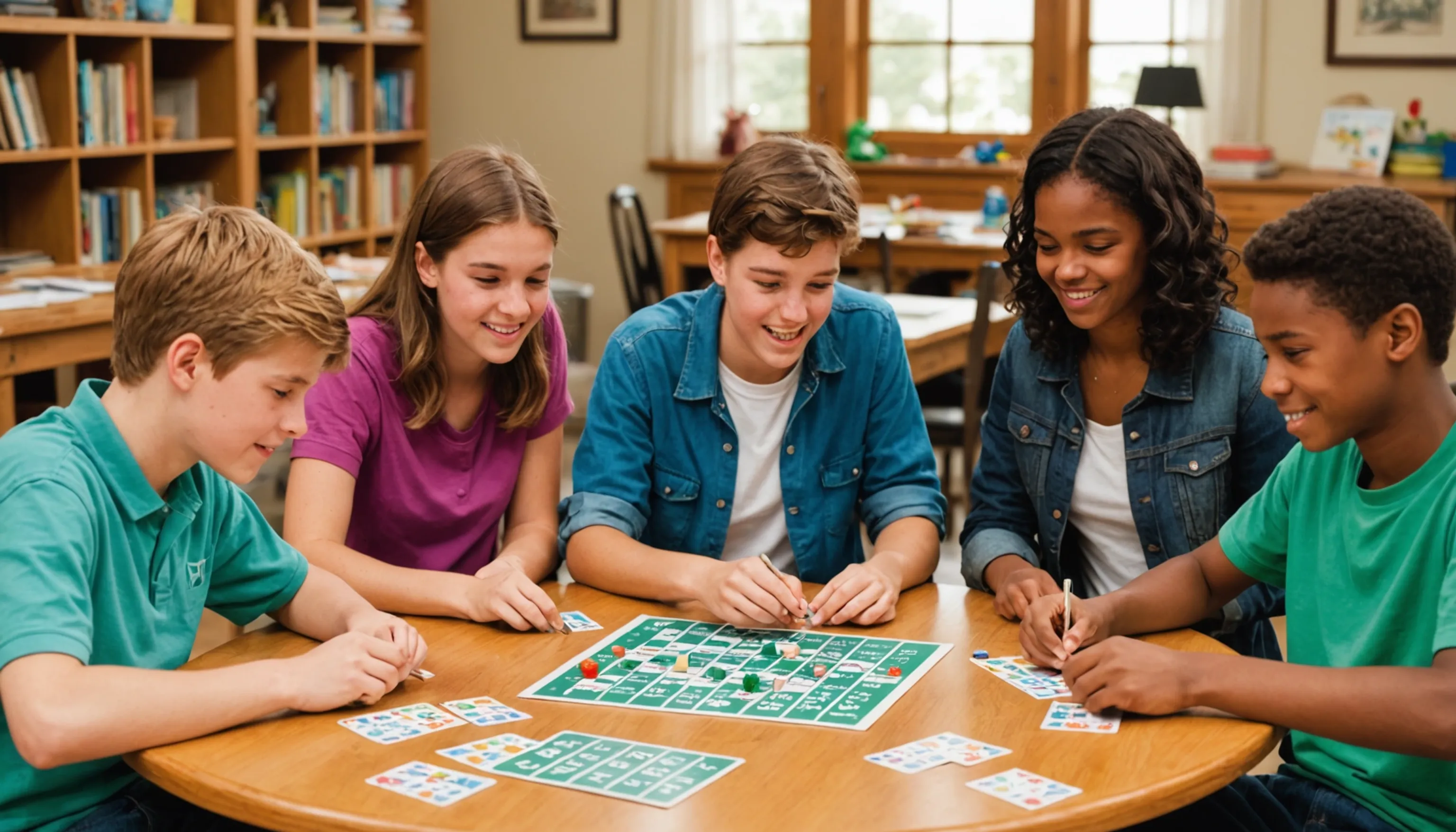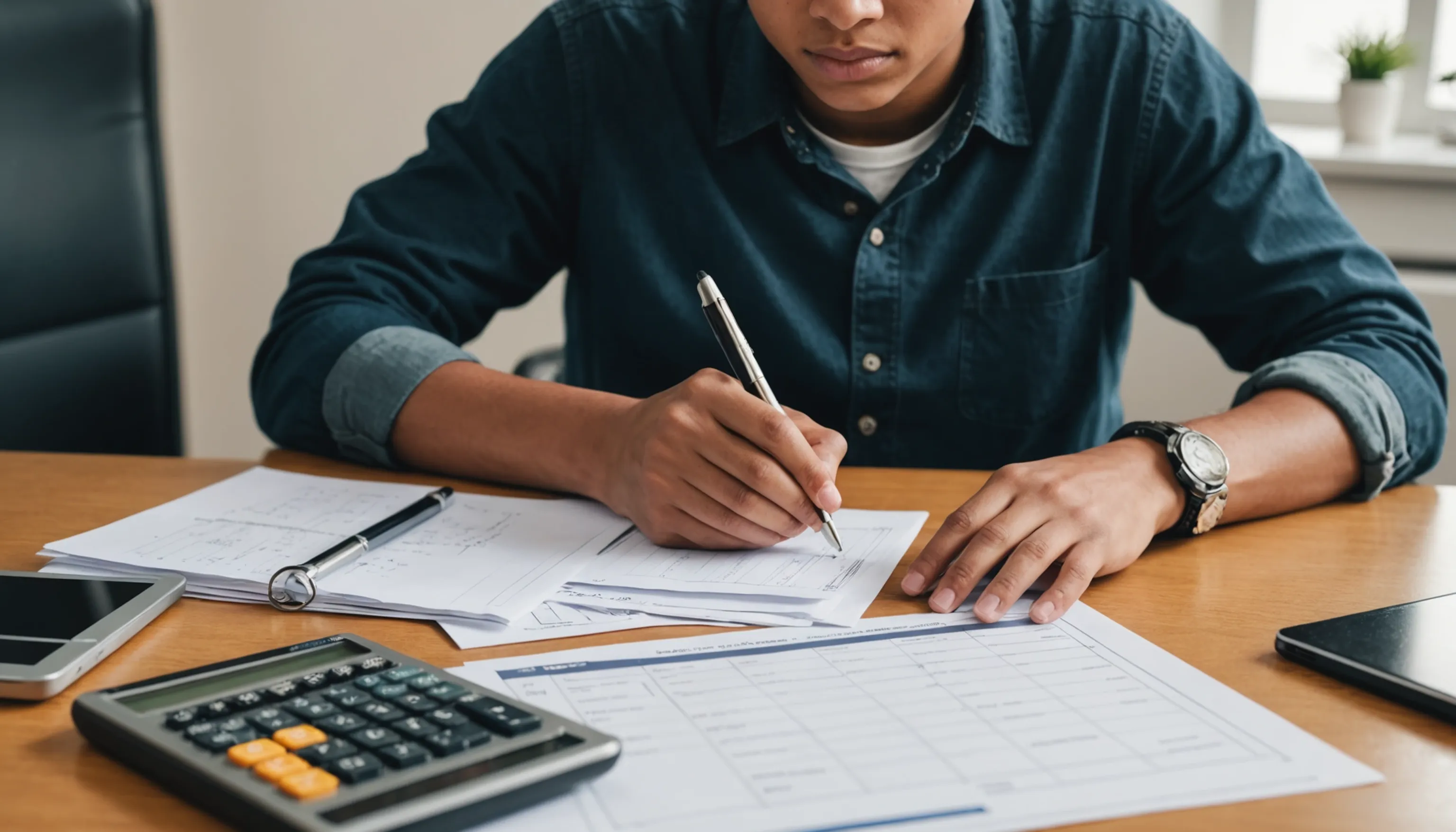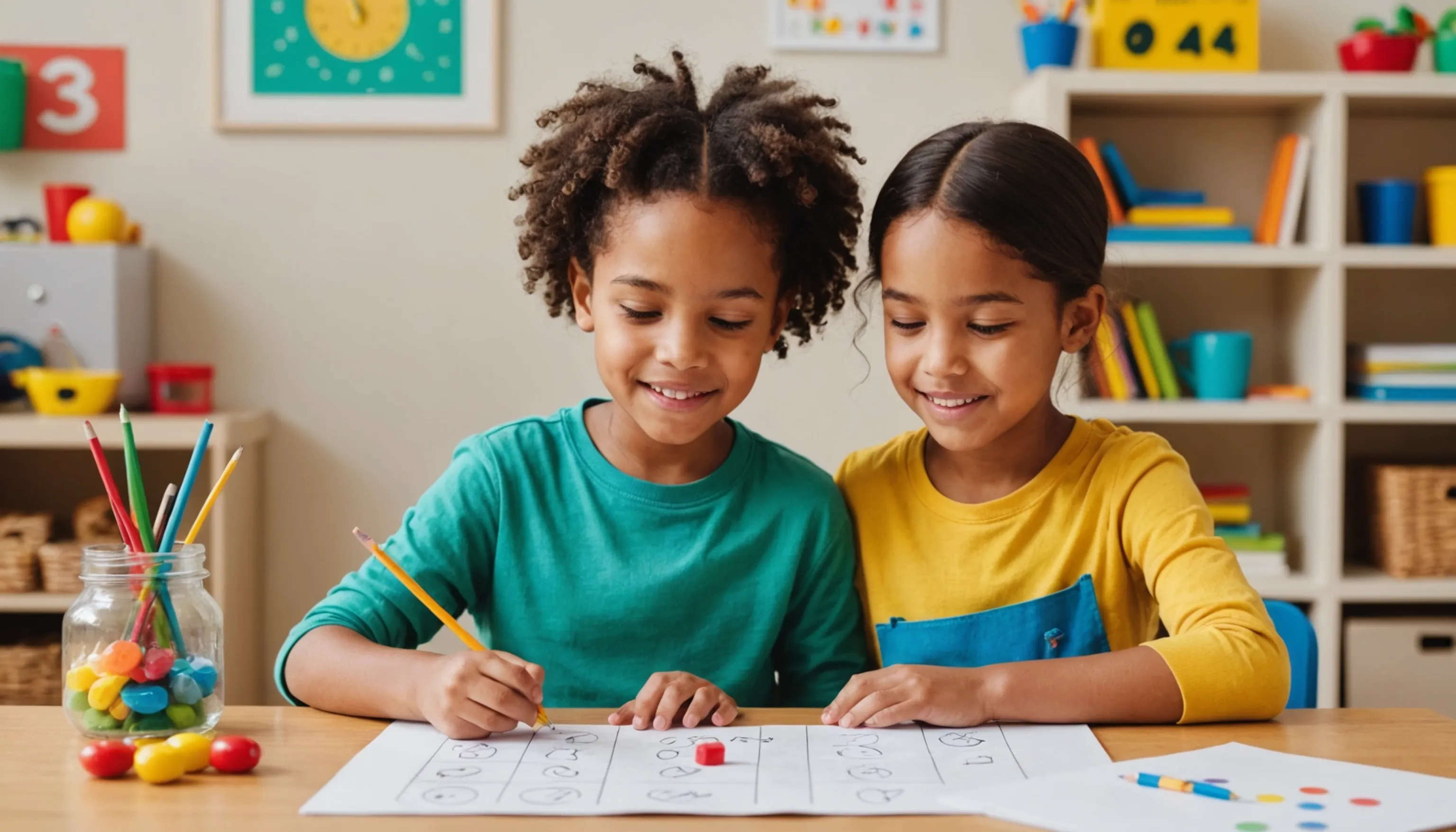Creative Ways to Teach Math at Home
 HvWHenry van Wagenberg
HvWHenry van Wagenberg
Creative Ways to Teach Math at Home
Teaching math at home can be both fun and effective with a few creative strategies. Start by using everyday objects like fruits or toys to illustrate mathematical concepts. Incorporate technology by using educational apps that make learning interactive. Fun math games encourage engagement; consider board games or online challenges that involve math skills.
Real-life applications, such as cooking or budgeting, help demonstrate the importance of math. For example, measuring ingredients while baking can teach fractions. By integrating these creative methods, parents and teachers can make math enjoyable and relevant for teenagers.
Using Everyday Objects for Math Learning
Using everyday objects for math learning is a fantastic way to make mathematics tangible and relatable for teenagers. By incorporating items found around the house, parents can create engaging lessons that reinforce key math concepts. Here are some effective strategies:
- Counting with Food: Use fruits, vegetables, or snacks to teach counting, addition, and subtraction. For example, ask your child to count apples and then add or remove some to practice basic operations.
- Measuring with Kitchen Tools: Cooking and baking are perfect opportunities to explore measurements. Have your teen measure ingredients using cups, tablespoons, and teaspoons, which can introduce fractions and conversions.
- Sorting and Classifying: Gather items like buttons, coins, or toys and have your child sort them by size, color, or shape. This activity can help in understanding data organization and basic statistics.
- Building Projects: Use building blocks or LEGO sets to teach geometry concepts. Encourage your teen to create different shapes and structures, discussing angles and symmetry as they build.
- Time Management: Use clocks or timers to teach time-related concepts. Discuss elapsed time by timing various activities, reinforcing the idea of addition and subtraction in real-life contexts.
By leveraging everyday objects, parents can enhance their teen's math skills in a fun, interactive way while demonstrating the subject's relevance in daily life.
Incorporating Technology and Apps
In today's digital age, incorporating technology and apps into math education can significantly enhance learning experiences for teenagers. With a wide range of educational tools available, parents and teachers can engage students in innovative ways. Here are some effective methods to use technology for teaching math:
- Math Apps: Utilize apps like Photomath, Prodigy, or Khan Academy, which offer interactive lessons and practice problems tailored to various skill levels. These platforms provide instant feedback, helping students understand mistakes and learn at their own pace.
- Online Games: Websites like Coolmath Games and Math Playground offer fun and interactive math games that reinforce concepts such as addition, subtraction, and problem-solving. These games motivate teenagers to practice math without the pressure of traditional methods.
- Virtual Tutors: Consider using online tutoring platforms like Chegg or Tutor.com, where students can connect with qualified tutors for personalized help. This one-on-one interaction can address specific challenges and enhance understanding.
- Interactive Videos: Leverage platforms like YouTube for educational channels that focus on math topics. Channels such as Numberphile or Math Antics provide engaging explanations that can supplement traditional learning.
- Math Forums and Communities: Encourage teens to join online math forums or study groups where they can collaborate with peers, discuss problems, and share resources. This interaction fosters a sense of community and enhances learning.
By effectively integrating technology and apps, parents and educators can create an engaging and enriching math learning environment that resonates with teenagers.

Fun Math Games and Activities
Making math fun can significantly enhance a teenager's interest and understanding of the subject. Incorporating games and activities into math learning not only fosters engagement but also reinforces essential skills. Here are some enjoyable math games and activities you can easily implement at home:
- Math Bingo: Create bingo cards filled with math problems or answers instead of numbers. As you call out problems, players mark their cards. This game promotes quick thinking and reinforces problem-solving skills.
- Card Games: Use a standard deck of cards for games like “21” to practice addition and subtraction. For example, players can draw cards and add their values, aiming to reach a total of 21 without going over.
- Board Games: Games like Monopoly or The Game of Life involve money management and basic arithmetic, making them excellent tools for teaching financial literacy and decision-making.
- Math Scavenger Hunt: Create a scavenger hunt with math-related clues. For example, “Find three items that weigh more than 5 pounds” or “Locate something that has a length of 12 inches.” This activity encourages critical thinking and practical application of measurements.
- Online Math Challenges: Participate in online math competitions or challenges on platforms like Mathletics or Math Olympiad. These competitions provide a fun way to test skills against peers while promoting healthy competition.
By incorporating these fun math games and activities, parents and teachers can create an engaging and motivating learning atmosphere that helps teenagers develop a positive attitude towards math.
Real-Life Applications of Math
Understanding the real-life applications of math can greatly enhance a teenager's appreciation for the subject. Math is not just about numbers; it's a crucial skill used in everyday situations. For instance, when cooking, math is employed to measure ingredients and adjust recipes. Budgeting and financial planning require math to manage expenses and savings effectively. Additionally, shopping involves calculations for discounts and total costs, while home improvement projects necessitate measurements and geometry. By highlighting these practical applications, parents and teachers can show teenagers the relevance of math in their daily lives, making the subject more engaging and meaningful.
Cooking and Baking as Math Lessons
Cooking and baking are not just about creating delicious meals; they also serve as excellent opportunities to teach teenagers essential math skills. By incorporating math into culinary activities, parents can make learning engaging and practical. Here are some ways to use cooking and baking as math lessons:
- Measuring Ingredients: Cooking requires precise measurements, whether it’s cups of flour, tablespoons of sugar, or ounces of liquid. This helps teens practice fractions and conversions. For example, converting a recipe from serving four to serving eight involves doubling ingredients, reinforcing multiplication concepts.
- Time Management: Cooking often involves timing for various tasks, such as boiling pasta or baking cookies. Discussing how to calculate cooking times, like determining how long to cook a larger roast, can enhance skills in addition and subtraction.
- Understanding Ratios: Recipes often require understanding ratios, such as the ratio of flour to sugar in a cake. This can lead to discussions about proportions and how altering a recipe affects the final product.
- Budgeting for Ingredients: When planning meals, teens can learn to budget by calculating the costs of ingredients. This activity introduces concepts of addition, subtraction, and financial literacy.
- Creating a Meal Plan: Encourage teens to plan a week’s worth of meals, requiring them to think critically about quantities and nutritional balance while applying their math skills.
By integrating cooking and baking into math lessons, parents can create a fun learning environment where teenagers see the real-world relevance of mathematical concepts.

Budgeting and Financial Planning
Budgeting and financial planning are essential life skills that provide teenagers with practical applications of math. By teaching these concepts, parents can help their teens develop a strong foundation in managing money and making informed financial decisions. Here are some effective ways to incorporate budgeting and financial planning into math lessons:
- Creating a Personal Budget: Encourage teens to create their own monthly budget. They can list their income sources, such as allowances or part-time jobs, and track their expenses. This exercise helps them practice addition and subtraction while understanding the importance of balancing income and expenditures.
- Calculating Savings: Teach teens how to set savings goals. For example, if they want to buy a new phone costing $600, discuss how much they need to save each month to reach that goal within a specific timeframe. This reinforces concepts of division and multiplication.
- Understanding Interest Rates: Introduce teens to basic concepts of interest by discussing savings accounts or loans. Explain how interest works, and calculate how much money they would earn in a savings account over time, allowing them to practice multiplication and percentages.
- Comparing Prices: When shopping, encourage teens to compare prices of similar products. This activity teaches them how to calculate unit prices and identify the best deals, enhancing their critical thinking and analytical skills.
- Investment Basics: Discuss the concept of investing and how it relates to compound interest. Explore simple investment scenarios to illustrate potential growth over time, which enhances their understanding of long-term financial planning.
By incorporating budgeting and financial planning into math lessons, parents can equip teenagers with valuable skills that will serve them well throughout their lives.
Shopping and Measurement Challenges
Shopping and measurement challenges provide an engaging way for teenagers to apply math skills in real-world scenarios. By incorporating these activities into learning, parents can help teens develop critical thinking and problem-solving skills while reinforcing essential mathematical concepts. Here are some effective ways to create shopping and measurement challenges:
- Grocery Shopping Lists: Have your teen create a grocery shopping list with prices for each item. Encourage them to calculate the total cost and compare prices of different brands. This activity reinforces addition, subtraction, and budgeting skills.
- Unit Price Comparisons: When shopping, challenge teens to find the best deals by comparing unit prices of similar products. For instance, they can calculate the cost per ounce or per serving to determine the most economical choice. This exercise sharpens their division skills while teaching them the importance of making informed purchasing decisions.
- Estimating Costs: Before going shopping, ask your teen to estimate the total cost of their shopping list. Afterward, compare their estimates with the actual total. This activity enhances their estimation skills and encourages them to think critically about prices.
- Measuring Ingredients: When preparing a meal, involve your teen in measuring ingredients. Use different measuring tools (cups, spoons, and scales) to teach them about volume and weight. Discuss the importance of precision in cooking, reinforcing their understanding of fractions and conversions.
- Sales and Discounts: Teach teens how to calculate discounts during sales. For instance, if an item is marked down by 20%, have them calculate the sale price and the amount saved. This enhances their understanding of percentages and makes them aware of budgeting strategies.
Through shopping and measurement challenges, parents can create enjoyable and educational experiences that highlight the practical applications of math in everyday life.
Creative Projects to Enhance Math Skills
Creative projects can be an excellent way to enhance math skills while keeping teenagers engaged. One idea is to create a math-themed scrapbook where they document various math concepts learned through real-life experiences. Another project could involve designing a board game that incorporates math problems, allowing them to practice while having fun with friends and family. Additionally, building models, such as bridges or geometric shapes, can reinforce concepts of measurement and geometry. By integrating creativity into math learning, parents can help teens see the subject as enjoyable and applicable in various contexts.
Art Projects Incorporating Geometry
Art projects that incorporate geometry can provide a dynamic way for teenagers to explore mathematical concepts while expressing their creativity. By blending art and math, students can gain a deeper understanding of geometric shapes, angles, and patterns. Here are some engaging art projects that utilize geometry:
- Geometric Mosaics: Have teens create a mosaic using colored paper or tiles. They can experiment with different shapes, such as triangles, squares, and hexagons, to form a cohesive design. This project encourages them to think about symmetry, tessellation, and spatial relationships.
- 3D Geometry Models: Encourage students to construct 3D models of geometric shapes using materials like cardboard, clay, or straws. For instance, they can create models of pyramids, cubes, and prisms, which helps them understand volume and surface area.
- Fractal Art: Introduce the concept of fractals and have teens create their own fractal designs. They can use software or draw by hand, exploring how patterns repeat at different scales. This project can illustrate concepts of infinity and self-similarity.
- Coordinate Plane Art: Use a coordinate grid to create pixel art. Students can plot points on a grid to form shapes and designs, reinforcing their understanding of the Cartesian plane and coordinates.
- Symmetry in Nature: Have teens explore natural objects, such as leaves or flowers, and create art that emphasizes symmetry. This project can lead to discussions about reflective symmetry and geometric properties in nature.
By integrating art projects with geometry, parents and educators can foster a love for math while enhancing students' understanding of geometric concepts in a creative and enjoyable way.
Building Projects and Measurements
Building projects provide a fantastic opportunity for teenagers to apply their math skills while engaging in hands-on activities. These projects not only foster creativity but also enhance understanding of measurements, geometry, and spatial reasoning. Here are some effective building projects that can incorporate math learning:
- Birdhouses: Encourage teens to design and construct birdhouses. This project requires them to measure and cut wood pieces accurately, teaching them about lengths and angles. They can also calculate the area of the base and the volume of the interior space to ensure it meets the needs of local birds.
- Model Bridges: Have students build scale models of bridges using materials like popsicle sticks or straws. They can explore different bridge designs, such as arch or truss bridges, and calculate the angles and lengths needed for stability. This project reinforces concepts of engineering and geometry.
- Gardening Boxes: Involve teens in creating raised garden beds. They will need to measure the dimensions of the space, calculate the area of the base, and determine how many plants can fit within the designated area. This activity combines math with biology and environmental science.
- Furniture Design: Challenge students to design a piece of furniture, such as a table or shelf. They will need to draw plans to scale, calculate dimensions, and determine the materials required. This project teaches them about ratios and proportions.
- LEGO Structures: Use LEGO bricks to build complex structures. Encourage teens to follow specific measurements and designs, which can help them visualize geometric concepts and practice precise measurements.
By incorporating building projects and measurements into math learning, parents can create an engaging environment that highlights the practical applications of math in real-world scenarios.
Math in Music and Patterns
Mathematics and music are deeply intertwined, making music an excellent medium for teaching mathematical concepts to teenagers. By exploring the relationship between math and music, students can discover patterns, rhythms, and structures that enhance their understanding of both subjects. Here are some engaging ways to incorporate math into music and patterns:
- Rhythm and Fractions: Teach students about musical rhythms by using fractions. For instance, a whole note can be divided into half notes, which can be further divided into quarter notes. Students can practice clapping or tapping out different rhythms, reinforcing their understanding of fractions and divisions.
- Patterns in Music: Encourage teens to listen to various music genres and identify patterns in melodies and harmonies. Discuss how repeating musical phrases or motifs creates structure within a piece. This activity helps students recognize sequences and symmetry, key concepts in mathematics.
- Creating Music with Math: Challenge students to compose their own musical pieces using mathematical patterns. They can experiment with scales, intervals, and time signatures to create unique compositions. This project fosters creativity while reinforcing mathematical thinking.
- Exploring Frequencies: Introduce the concept of sound waves and frequencies. Students can learn how different pitches correspond to specific frequencies measured in Hertz (Hz). They can explore how changing the length of a string on a musical instrument alters the pitch, connecting geometry to acoustics.
- Visual Patterns: Have students create visual representations of music using graphs or charts. This can include plotting notes on a coordinate plane or creating visual patterns that correspond with rhythmic structures.
By integrating math into music and patterns, parents and educators can create a rich learning environment that highlights the connections between seemingly different subjects, making math more relatable and enjoyable for teenagers.
